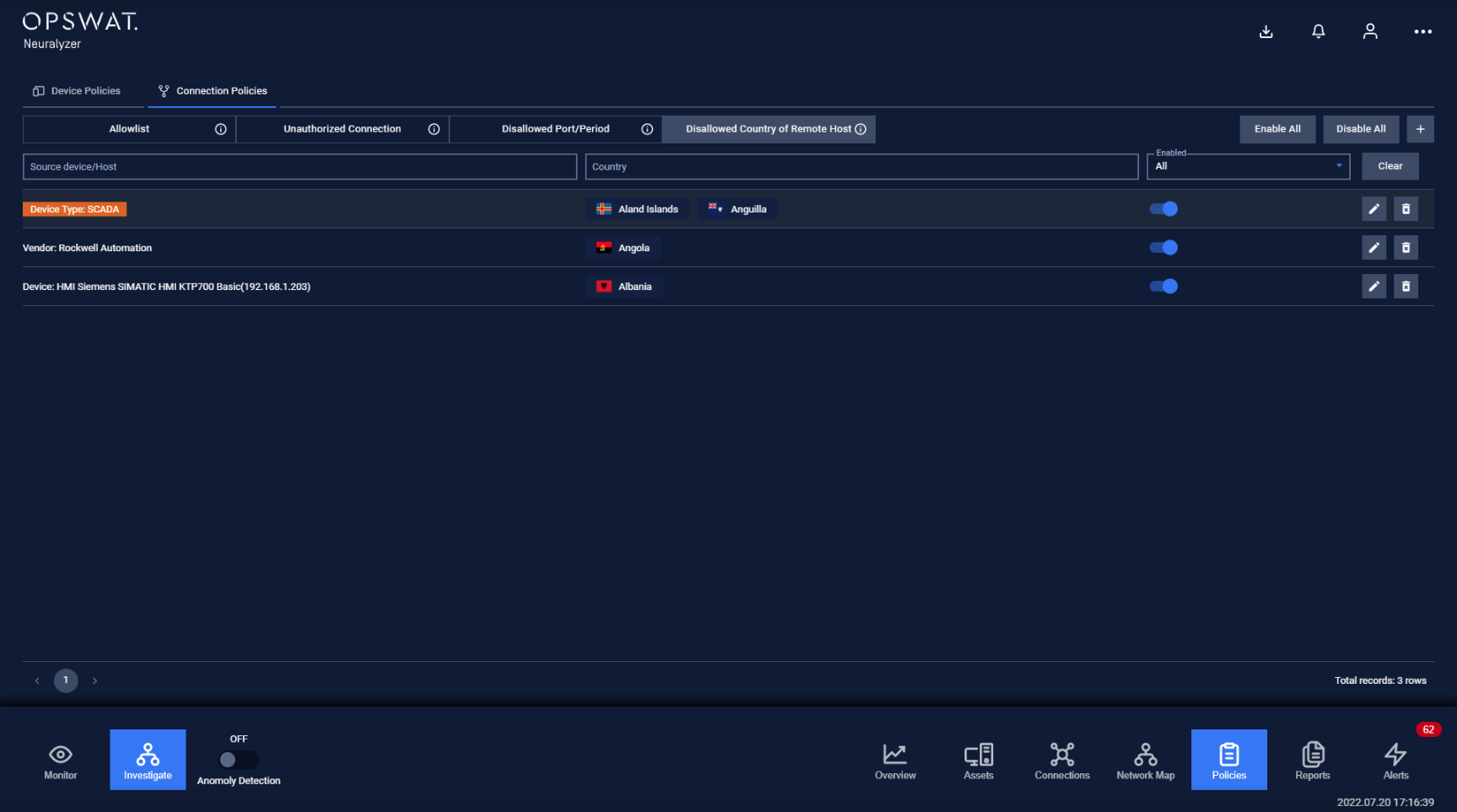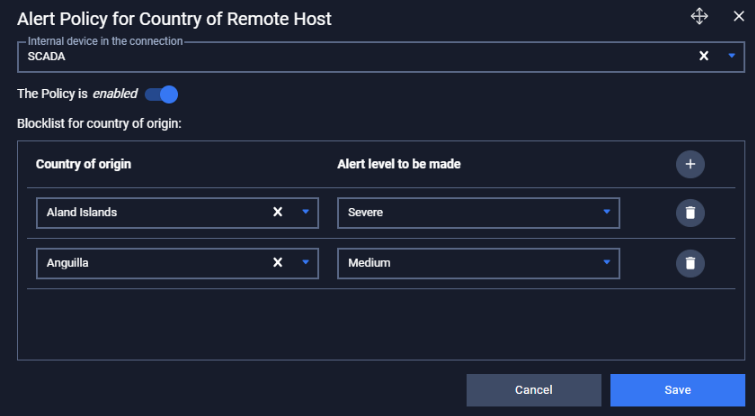Disallowed Country of Remote Host
The disallowed Country Of Remote Host is accessible under Policies → Connection Policies → Disallowed Country of Remote Host.
The disallowed Country Of Remote Host contains a list of country of remote host that are not allowed to establish in the system.

Any remote hosts that are listed in the this policies will make Neuralyzer trigger an alert when they are established to that country.
Disallowed Country of Remote Host policies are added manually by the user.
Note: The blocklist policy can be detected even user didn’t turn on Anomaly Detection.
Actions on Disallowed Country of Remote Host
1. View policy
Disallowed Country of Remote Host page is paginated, each page contains 20 records, the total number of policy records are displayed at the bottom of the list.
Policies are displayed in a list, each record contains the following information:
Source device/host: field source device can have these following values:
- Device name in the system, detected by Neuralyzer.
- Device type/subtype, which indicates that the policy will apply to all devices of that type/subtype.
- Device vendor, detected by Neuralyzer.
Country: where is the remote host that the source device/host communicate to.
2. Create a new policy

You can create a new policy by tapping on button “+” on the top right of the Policy screen, a policy creation pop-up will appear.
| Field | Type of input | Note |
|---|---|---|
| Source device/host |
|
|
| Enable/Disable policy option |
| |
| Country of Remote Host |
| |
| Criticality |
|
|
3. Edit policy
You can edit a policy by tapping on “Edit” button on the right of each policy record, a policy editing pop-up will appear.
In the pop-up editing, you can see the detail policy. You can edit by clicking on the field to be edited and perform input operations like when creating a policy.
When finished editing, click “Save” to save the changes or “Cancel” to discard all.
4. Filter policy
Filter for policy list is located at the top of the policy page.
You can search on one or more fields of the policy, just input value onto one or more fields on.
E.g. You want to search policy for a source device/host with ip 192.168.1.120, proceed to input “192.168.1.120” into field source device/host, the result list will displayed.
Click the “Clear” button to clear the values in the filters.
Note: You can input device name or IP into source device/host or destination device field, we support searching device by both name and IP.
5. Remove policy
You can remove a policy from the list by clicking the "Delete" button on each of the policy record.

